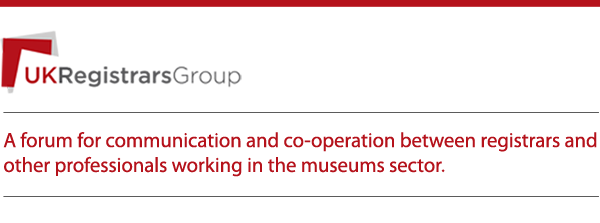As a member of the UKRG Committee I was fortunate enough to attend the brilliantly organised ERC in Helsinki. From the conference itself to boat trips, Moomins and the Finnish Male Screaming Choir it was both entertaining and extremely informative, not only in registrarial issues, but also in the nuances of the wonderful Finnish culture. I’ve come away feeling better informed about so many issues, but also having met and networked my way around a plethora of interesting, engaging and inspiring colleagues. As someone who does not work with loans I was worried that it would be too loans and exhibitions focused, however, the sessions provided were all encompassing and very accessible and so I have come away with a new perspective on all aspects of the registrar's work. In particular, I learnt a lot about couriering and how the role of the courier is a finely tuned balancing act between providing the upmost care to the object in question as well as being a project manager, institution representative, problem solver, and documenter at the same time as respecting other cultures and colleagues across the globe. No mean feat!
Another session that stimulated me was the brilliant one by Kate Parsons and Jane Knowles – their ‘real’ case study approach was extremely educational and highly engaging. Their representation of how to manage risks in lending and borrowing through the use of an imagined real case with emails, letters and phone call transcripts created a real sense of the various elements in a registrar's job and the way that risk should and can be properly managed. This was then followed on by Eva-Lena Bergström who spoke about calculating risks for lending and borrowing, focusing specifically on practical ways of reducing costs of lending and borrowing cultural objects within the EU member states and the EU collection Mobility 2011-14. This has a focus on improving and expanding indemnity schemes, improving valuation processes, simplifying the process of risk assessment, and making the transport procedure more reliable and less expensive. I was astonished to learn that over the last 5 years 2,296 exhibitions have been covered by state indemnity in Europe and out of those only 16 cases of damage were claimed for at least 100,000 cultural goods borrowed, a tiny percentage of less than 0.016%. I came into the conference not knowing that much about state indemnity and I left realising what a powerful and amazing resource it is for museums across Europe.
For me, one of the themes tied across the whole conference was collaborative working not only between departments within their own institution but also between different institutions, transport agents, countries and external organisations. A great example of this was given by Christopher Marinello from Art Recovery International who gave a fascinating talk about art theft and recovery. I thought it was amazing that ArtNet has image recognition software which should make art recovery a bit easier in cases where there is an image of a lost artwork, no matter how bad, dark, grainy, or inconclusive it is to the human eye – seems a great idea to use technologies that are already in use in the policing world and adapt these for art theft reasons. Another great example is that of the case of the Metropolitan Museum in New York and the Louvre and the fact that they came to an agreement in 1974 to reunite the head and body of a neo-Sumerian statue. To do this they have a 4 year long term loan agreement with each other so each museum can display the full statue. This seems a great solution and positive outcome highlighting the benefits of collaborative working for the object itself as well as to the public.
All in all I had an amazing time at the conference. The sessions were well structured and balanced and the questions from the audience and Twitter thought provoking and, in some cases, the basis for further discussion and thought from the entire museum community. The parties and events organised for delegates were also great fun, with lots of dancing and singing at the Midsummer party at the Kiasma – and I’m pleased to say, the end being an Abba medley – very appropriate for the region we were in! It was also amazing to see a light sky at midnight – pretty spectacular and something everyone should try and see at least once in their lives. What I’ve taken away is a greater understanding of the registrar’s role, an appreciation for my colleagues and a desire to learn more and more. My favourite part of a talk in the conference was from Renee Pfister’s case study of one of the exhibitions she helped set up in a Mexican gallery – when she arrived the plinths were not as she expected. Instead, the Mexican manufacturer had felt it was only right to add their creative spin on the plinth and as it was in Mexico, add that Mayan feel to it. This meant a plinth that was a truncated square pyramid! A perfect example of how unexpected the role can be and how multi-faceted the registrar role really is.
Amy Graves - UKRG Treasurer

No comments:
Post a Comment